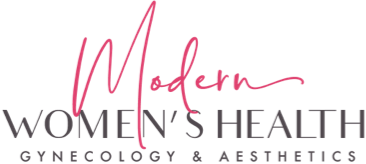
October is Breast Cancer Awareness Month and a good time for all of us to consider risk factors for developing breast cancer. Some might be familiar with the risk factors related to family and certain gene mutations known as the 'breast cancer gene' (BRCA). This refers to a pair of different genes that, when mutated, can put a person at an elevated risk for developing breast cancer.
For those with the BRCA risk factor, the most effective option for preventing cancer is surgery to remove the breasts (mastectomy) and ovaries and fallopian tubes (salpingo-oophorectomy). There are other available options to reduce the chance of developing cancer or improve the likelihood of detecting it earlier, such as:
- •Taking medications (such as tamoxifen and raloxifene, and aromatase inhibitors) to lower the chance of developing breast or ovarian cancer
- •Yearly screening with breast magnetic resonance imaging (MRI) and mammogram, possibly starting at a younger age
- •Clinical breast exams, starting at a younger age and done more frequently
- •Screening for ovarian cancer with transvaginal ultrasound and CA-125 blood tests
It's important to also consider lifestyle-related risk factors. These are important because these are the risk factors you can do something about. We call these risk factors, “modifiable”. They differ from the non-modifiable risk factors like age and genetics.
- •Alcohol intake can increase a woman’s risk of developing breast cancer. The risk increases based on the amount one consumes. Women who have 1 drink per day have a slightly higher risk than women who do not drink, and those that have 2-3 drinks per day have about a 20% higher risk than non-drinkers.
- •Excess weight after menopause increases the risk of developing breast cancer. This is because fat tissue is where most of a woman’s post-menopausal estrogen is created. Having too many causes increased estrogen levels. Excess weight increases the risk of other types of cancers, as well.
- •Physical activity has been shown to decrease the risk of breast cancer. So, physical inactivity can increase risk. It isn’t clear how much is needed, however, most studies have shown that even two hours a week of physical activity might decrease risk.
- •Diet can play a role in developing breast cancer. A healthy diet of mostly vegetables, fruits, and whole grains, and less processed meats can help reduce the risk of breast cancer. A healthy diet can help you stay at a healthy weight, which also reduces risk.
- •Women who have children after age 30 or women who don’t have children at all have a slightly higher breast cancer risk. Women who breastfeed, particularly for 1.5 – 2 years may have slightly lower rates of breast cancer.
- •Some types of hormonal birth control might increase risk. However, after discontinuing use risk returns to baseline. It is important to note that some types of hormonal contraception can be protective against ovarian and endometrial cancers. Some types of hormone replacement therapy may increase risk, as well.
Early detection of breast cancer is very important. Mammograms can help find breast changes that could be cancer years before physical symptoms develop. Many decades of research clearly show that women that have regular mammograms are more likely to have breast cancer detected early, less likely to need aggressive treatment, and more likely to be cured. 3D mammograms have become more common and several studies have shown them to be helpful for women with dense breast issues. In certain cases, MRI or breast ultrasound may be recommended in addition to mammograms. No imaging is perfect, so women should be familiar with how their breasts normally feel and look, and should always report changes to their health care provider right away. If you develop a new breast lump, skin changes, tenderness, or nipple discharge, then an appointment is recommended for a clinical breast exam. Depending on your symptoms, age, and association with your cycle, we may have you follow up in 4-6 weeks for a re-check, or we may order a mammogram or ultrasound.
For more information or to make an appointment and schedule a consultation, please call us at (512) 301-6767.


